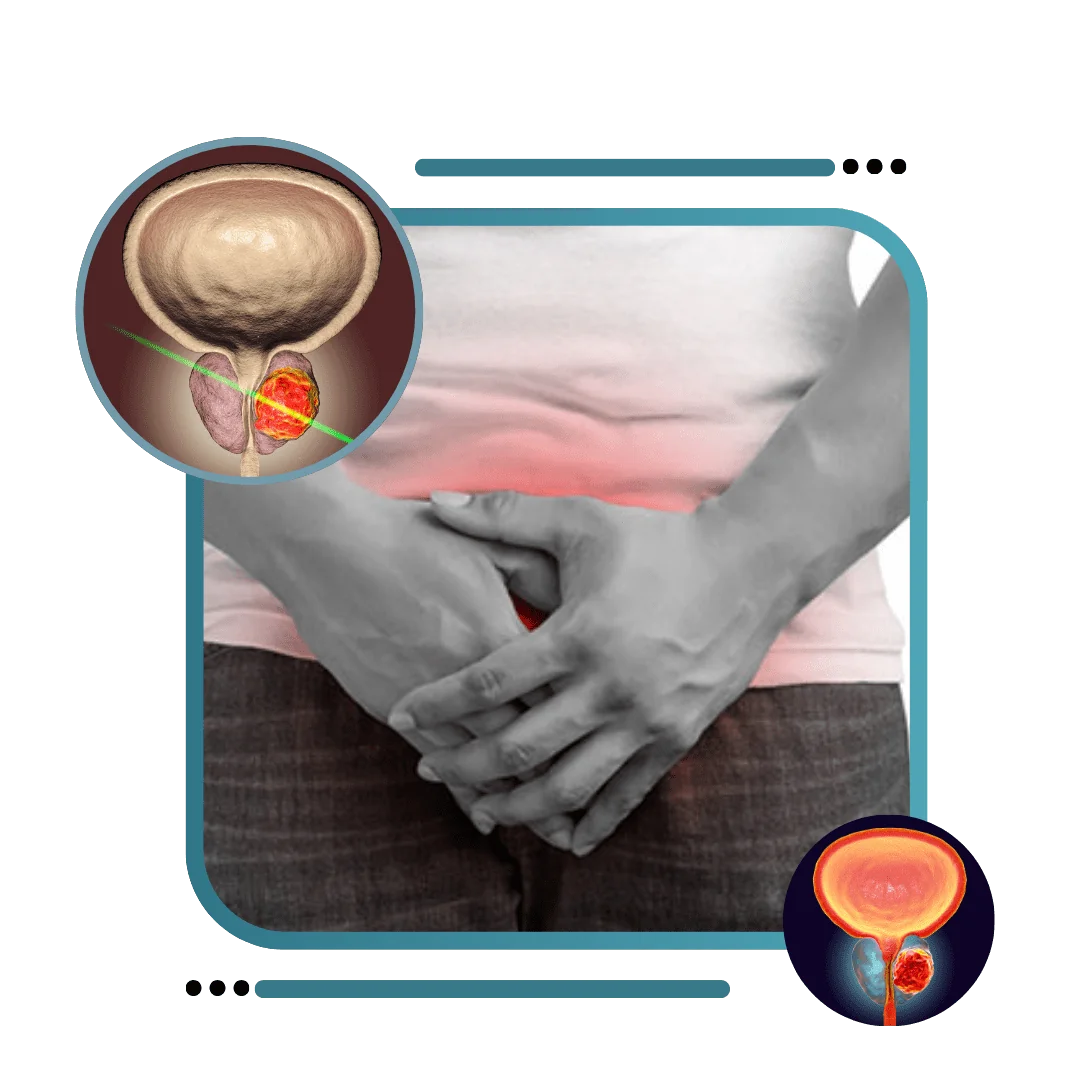
Prostate Laser Surgery in Jalandhar
If You Find the Best Prostate Surgery Hospital In Jalandhar? Then Star Hospital is best for you. Dr Jasmeet Singh Ahluwalia has many years of experience in this field. The prostate is a gland that is present just distal to the urinary bladder and is attached to the upper urethra
After the age of 40 in males, the prostate starts increasing in size. If it becomes too large or distorts in shape, it may compress the urethra. About half of men in their 50s and about 90% of men in their 80s are likely to have enlarged prostates.

Neat & Clean Rooms
Spotlessly clean, profoundly caring. Our hospital ensures a pristine environment for your well-being
Modern Equiments
Our hospital has advanced technology gadgets and the best equipment in every field.
City Centre Location
Conveniently located at the heart of the city, our hospital offers easy access and exceptional care in a prime city center location

Lifestyle changes: avoid alcohol and caffeine, decrease liquid intake especially before sleep, pelvic exercises. The next level of treatment for benign prostatic hyperplasia is usually medications such as tamsulosin (Flomax®). This is a type of drug called an alpha blocker. It is meant to relax the bladder neck muscles and prostate muscles to increase urinary flow and decrease the urge to urinate. Other drugs called alpha reductase inhibitors, such as finasteride (Propecia®, Proscar®) and dutasteride (Avodart®), can be used to reduce the size of the prostate and reduce urine flow.
If lifestyle changes and medications do not help with BPH, surgery is the next option. Surgical options range from minimally invasive therapies to full surgery.
Early symptoms of BPH are:
- Decreased stream of urine, which may progress to complete blockage of urine.
- Incomplete emptying of the bladder
- Difficulty while starting to pass urine
- Increased frequency of urination during the day and or during the night
- Urine infection
- Blood in the urine
- Bladder stones
Kidney damage may happen in later stages
- Examination by doctor
- Ultrasound
- Blood tests like PSA may be done to rule out cancer of the prostate
Treatment. - Lifestyle changes: avoid alcohol and caffeine, decrease liquid intake, especially before sleep, and pelvic exercises.
- The next level of treatment for benign prostatic hyperplasia is usually medications such as tamsulosin (Flomax®). This is a type of drug called an alpha-blocker. It is meant to relax the bladder neck muscles and prostate muscles to increase urinary flow and decrease the urge to urinate.
- Other drugs called alpha-reductase inhibitors, such as finasteride (Propecia®, Proscar®) and dutasteride (Avodart®) can be used to reduce the size of the prostate and reduce urine flow.
- If lifestyle changes and medications do not help with BPH, surgery is the next option. Surgical options range from minimally invasive therapies to full surgery.
Prostate Laser Surgery Educational Videos
Dr. Jasmeet Singh Ahluwalia is a highly skilled and one of the best Prostate Cancer Doctors in Jalandhar. They have Many Years Of experience in this Field.
Benign prostate surgery is recommended if less invasive treatments have failed, or if you have severe symptoms such as:
- An inability to urinate
- Frequent urinary tract infections
- Excessive blood in the urine
- Bladder stones
- Kidney damage
Several minimally invasive surgeries may be used for BPH, these include:-
- Greenlight laser: Photoselective vaporization of the prostate (PVP) is a treatment that vaporizes prostate tissue to create a channel in the urethra for free urination. This is an office-based therapy and requires an anesthetic.
- Plasma button electrovaporization: Prostate tissue is removed using low-temperature plasma energy. Tissue is vaporized. This is an operating room-based therapy and requires an anesthetic.
- Rezum: Water vapor is directly delivered to the prostate tissue. Over a 3-month period, the tissue is destroyed and reabsorbed by the body. This is an office-based therapy and is performed under a local tissue block.
- Urolift: A mechanical approach that places implants to pin the lateral prostate lobes out of the way to reduce obstruction. This is an office-based procedure performed under a local tissue block.
What are other benign prostatic hyperplasia (BPH) surgery options?
If your symptoms are severe or minimally invasive surgical treatments do not help with your enlarged prostate, your doctor will likely recommend another kind of surgery. Several surgical options include:
- Transurethral resection of the prostate (TURP): This is the most common treatment for BPH. During this procedure, your urologist will insert a rigid instrument called a resectoscope into the urethra. This is why it is called transurethral. Inserting the tube this way means no cutting into the prostate. He or she will then use the charged resectoscope to remove the excess tissue that is blocking the urine from exiting the bladder.
- You may be put to sleep with general anesthesia: Local anesthesia for the lower part of the body may be used for this procedure. The average hospital stay for TURP is 1 to 2 days.
- Transurethral incision of the prostate (TUIP): This is a similar procedure to TURP. Instead of prostate tissue being removed the bladder neck and prostate are cut to relax the bladder opening, allowing urine to flow more freely. TUIP is most successful in men with smaller prostates.
- Simple prostatectomy: A surgical procedure in which an incision is made through the abdomen or performed laparoscopically. The inner portion of the prostate gland is removed, leaving the outer segment intact.
If you want more information regarding this than Contact us for an appointment











